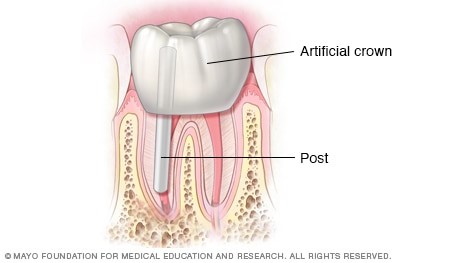Root Canal- Everything you need to know

Does Soda Affect your Teeth?
December 30, 2020
Malocclusion of Teeth- What is it?
January 5, 2021Whose knees do not quake at the thought of a “root canal?” Does pain spring to mind? But how many people in Kodambakkam even know what a “root canal” really is?
A “root canal” is not a surgery, but a tooth’s part. A root canal is the tooth’s hollow section with blood vessels, nerve tissue, and other cells, also called the pulp. We at K- Smile Dental Care best dental clinic in Kodambakkam, Chennai are going to explain about Root Canal treatment
A tooth comprises a crown and roots. The crown is mostly above the gum, whereas below are the roots. The roots join the tooth to your jawbone. Within the root canal is the pulp.
The pulp nourishes your tooth and gives moisture to the nearby material. Also, the pulp’s nerves sense cold and hot temperatures as pain.
The dental procedure usually referred to as a “root canal,” is known as an endodontic therapy, which means “within the tooth.”
However, the term “root canal” is commonly used to discuss the treatment.
This article will discuss the steps, pain level, and complications of a root canal treatment. So, let us dive right in.
What are the Steps in a Root Canal?

Dr bhuvaneshwari, the best dentist in Kodambakkam, Chennai says that Root canal procedure is performed in three levels, and it requires between one and three sessions to finish.
Step-1: Cleaning the root canal

First, your specialist extracts everything that is within the root canal. You will be under local anesthesia, and your doctor will make a tiny access hole on the tooth’s surface. They will extract the dead and diseased pulp tissue with small files.
Step-2: Filling the root canal

Next, your specialist cleans, decontaminates, and shapes the hollow area, using small files and irrigation solutions. After that, your tooth is filled with a rubber-like material. The dentist will then use adhesive cement to seal the canals properly.
After your root canal procedure, the tooth is dead. You will not feel any pain in that tooth as the nerve tissue has been extracted, and the infection has been eliminated.
Step-3: Adding a crown or filling

A tooth having no pulp gets its nourishment from the ligament that joins your tooth to the bone. The supply is enough, but your tooth becomes brittle after some time, so a crown or filling protects it.
Till the filling or crown is complete, you should not bite or chew on the tooth. Once the filling or crown is done, you can use your tooth like before.
A root canal procedure usually requires a single session. However, if there are multi-canals, curved canals, or large infections, it can take one or two additional appointments.
Now let us move on to the most common question, how painful is a root canal.
How Painful is it?
Most people fear that a root canal will be painful. However, if a trained dentist in Kodambakkam carries out the procedure, you will feel relatively less pain.
The pain felt is from your infection and not from the procedure. The procedure does not give pain; it helps to reduce it.
Your dental specialist numbs the tooth and surrounding area with local anaesthesia; this will relieve the procedure’s pain.
Following the surgery, some tenderness is common. It is not permanent, and over the counter (OTC) pain medicines will help you relieve it. If required, your dentist will prescribe drugs like codeine.
Even though the root canal is a relatively safe procedure, some complications can occur.
Complications during a Root Canal
As with any surgery, complications can occur in a root canal as well. They include:
- Sometimes the surgeon finds only three root canals in a tooth that contains four. If one canal stays untreated, your infection may continue and spread into the bone.
- Your dentist should ensure the filling material goes deep enough into the canal to fill it up. If the root canal is not completely sealed, the infection can come back.
- Your tooth’s root may crack in the treatment, or the instruments break in the canal or perforate the canal. This makes it challenging to fill your tooth correctly.
If problems happen, your dentist can try to fix the issue and complete the root canal.
To prevent complications, you must always follow your dentist’s instructions. If an antibiotic is prescribed, you must complete the whole prescription.
Now that you know the complications during treatment, let us learn how to prevent infections and tooth decay.
How to Prevent Tooth Decay?
If you want to avoid tooth decay, infections, and gum disease, so that you never need a root canal, follow the tips mentioned below.
- Brush your teeth as the last thing you do before bedtime and minimum one other time every day
- Use toothpaste that has fluoride
- Use a proper toothbrush and replace it regularly
- Attend frequent dental cleanings and checkups
- Flossing can clean between the teeth and avoid plaque development, so floss your teeth
- Avoid foods and sugary drinks and follow a healthy diet.
Remember, it Is better to get a root canal than suffer from the pain of an infection. If you do not treat your tooth infection immediately, there is a chance that it may spread to your other healthy teeth as well.
So, contact our dental clinic in Kodambakkam and learn more about a root canal to ease your mind and fears.




